EPA Science Matters Newsletter: Volume 1, Number 1
Published April 2010
Executive Message
- Executive Message
Communication and other catalysts
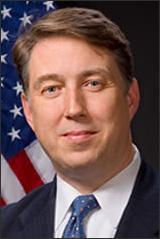
Catalyst. As a chemist I learned that a catalyst is a chemical that speeds up a chemical transformation and remains unchanged after that transformation takes place. However, over the years, I have discovered that catalysts are not limited to chemicals and engaging in catalysis is not limited to chemists. In fact, communication can be a catalyst.
It is in that spirit that I welcome you to the inaugural issue of Science Matters, a newsletter devoted to sharing the innovative environmental and human health science being conducted at the U.S. Environmental Protection Agency.
As I begin my time as the Assistant Administrator of EPA's Office of Research and Development (ORD), I am acutely aware that all of us as individuals and collectively as an Office and Agency will need to act catalytically if we are to achieve our mission of protecting human health and the environment.
That means that we have to ensure that our science, our research, our assessments, and our technical support is not only useful to the immediate work of the EPA (which is essential), but also to the greater community of individuals who share our mission. We need our work to engage, inform, and empower their efforts to protect the environment and human health whether they are in academia, industry, non-governmental institutions, other branches of government, or—our ultimate reason for the work we do—the American public.
EPA Administrator Lisa Jackson has set forth seven important priority areas as the framework for our research. The wide range of talents in ORD is up to the ambitious challenge that these priority areas identify.By looking at the new environmental challenges we face with the fresh perspective and ingenuity that is the hallmark of science and technology, I believe that we can make contributions that will serve the generation of today's Americans and perhaps most importantly, the generations of Americans yet to come. We can do it by thinking creatively, proceeding expeditiously, and acting...catalytically.
Sincerely,
Paul T. Anastas
Assistant Administrator
U.S. EPA
Office of Research and DevelopmentLearn More
EPA Research Highlights
- 40 years of EPA research in support of the Clean Air Act
EPA celebrates 40 years of research in support of clean air
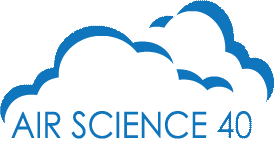
A year-long celebration in 2010, called Air Science 40, is telling the story of how EPA’s research has made a difference over the past four decades in understanding key air pollution issues. The anniversary celebrates past accomplishments and focuses on what is being done now to address complex new challenges in air quality management, notably the multitude of pollutants in the air and the interactions between air quality and climate change.
To kick off the celebration, EPA’s Clean Air Research Program cosponsored an international conference on the latest science associating sources and their emissions with health risk and how we might minimize these risks. This transdisciplinary research endeavor is critical to the development of improved and cost-effective air quality management strategies. The conference, entitled “Air Pollution & Health: Bridging the Gap from Sources to Health Outcomes,” was held March 22 to 26 in San Diego.
Another milestone in 2010 will be the unveiling of university Clean Air Research Centers that will use EPA grants to provide the fundamental research EPA needs for policies to deal with the multipollutant complexities of air quality management. These centers will expand the scope of previous EPA-funded PM research centers, which focused primarily on outdoor air particles.
“We live in a world with multiple air pollutants interacting with one another. Research is needed to better understand how these pollutant mixtures can impact our health and how we can best minimize these impacts through innovative control approaches,” said Dan Costa, Director of the Clean Air Research Program.
Since the establishment of EPA in 1970 and passage of the Clean Air Act Amendments the same year, the Clean Air Research Program has supported the development and implementation of the nation’s air quality standards and provided the scientific information, tools and technology to reduce and control air pollution.
The Air Science 40 celebration plans to include a seminar series in Washington, D.C., Congressional briefings, and regional presentations.
Learn More
- Aging Water Infrastructure
EPA researchers and engineers work to help communities deal with aging and failing drinking and wastewater systems.
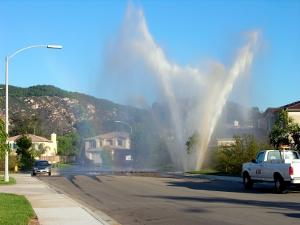
On the morning of December 23, 2008, drivers in suburban Maryland were confronted with a torrent of water rushing down River Road. Somewhere beneath the pavement, a 66-inch water main ruptured, allowing some 150,000 gallons per minute to cascade onto the road in standing waves three to four feet high. Rescue crews launched from boat, fire engine, and helicopter were able to rescue all stranded motorists and their passengers. Luckily no one was hurt.
Following a four-month forensic investigation, The Washington Suburban Sanitary Commission determined the cause of the water main break could be traced back to its original installation in 1965.
At 43 years of age, the pipe lurking beneath River Road was relatively young compared to many still in use in areas of the country that are easily twice that age, or older. The nation’s water infrastructure—the pipes, treatment plants and other critical components that deliver drinking water and remove and treat waste water—is aging.
Age and deterioration are taking a toll. Every year across the country, there are approximately 240,000 water main breaks. As many as 75,000 yearly sanitary sewer overflows discharge three to ten billion gallons of untreated wastewater, leading to some 5,500 illnesses due to exposures to contaminated recreational waters.
EPA researchers are taking action to meet the challenges of the nation’s aging water infrastructure.
The Agency’s report, Clean Water and Drinking Water Infrastructure Gap Analysis (PDF) (54 pp, 2.3 MB, About PDF), a comprehensive assessment of the difference between needs and spending on the nation’s water infrastructure, identifies a potential $500 billion gap in funding by the year 2020, in large part due to aging.
“EPA works with collaborators and stakeholders to conduct projects that will fill identified aging drinking water and wastewater research gaps,” said Thomas Speth, Director of the Water Supply and Water Resources Division at EPA’s National Risk Management Research Laboratory. “The application of new technologies and management practices from this research could also narrow the large funding gap.”
Engineers and scientists in the EPA’s Aging Water Infrastructure Research Program are working to identify critical research needs and to develop, test, and demonstrate innovative technologies that will assist communities to address the challenges of aging water infrastructures by reducing the cost and increasing the effectiveness of existing or new infrastructure. EPA researchers collaborate with partners and stakeholders in four primary research areas: condition assessment, system rehabilitation, advanced concepts, and treatment technologies for wastewater and water reuse.The Program supports EPA’s larger Sustainable Water Infrastructure Initiative, which guides efforts to change how the nation views, values, manages, and invests in its water infrastructure. Both programs are based on forging successful partnerships, bringing drinking water and wastewater utility managers, trade associations, local watershed protection organizations, and federal, state, and local officials together to ensure that all components of our nation’s water infrastructure are addressed, and see that EPA’s research results reach those who need it most.
Learn More
- Understanding What You Breathe
EPA scientists are monitoring and analyzing air pollution to develop ways to trace pollutants to their source, and help air quality managers prioritize action.
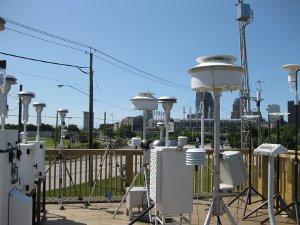
Breathing is our one common constant. No matter what else you’re doing, who you are, or where you happen to be at any given moment, you are always in some stage of breathing.
The average adult breathes in more than 3,000 gallons of air every day. While the quantity of air we all breathe may be roughly the same, the quality is not.
Millions of people live in areas, particularly cities, where air pollution—smog, particulate matter, ozone, and a mixture of pollutants—makes the very act of breathing a health concern.
The air we breathe can be polluted by a variety of sources, from power plants and other industry located hundreds of miles away, to sources closer to home such as motor vehicles on nearby roads, local industrial plants, and even lawnmowers in our own backyard. Knowing the sources of air pollution is important to health officials and air quality managers, who are always looking for effective ways to clean the air. For them, every breath is local.
EPA scientists are working to develop tools and models that can track air pollution to its source.
One such effort is the Cleveland Multiple Air Pollutant Study (CMAPS), a collaborative effort to investigate air pollution and the distribution of pollutants across Cleveland and the surrounding metropolitan area.
Cleveland was chosen as a study location because the city’s air quality is affected by numerous local and regional air pollution sources. Additionally, existing air monitoring sites in Cleveland have shown pollution levels exceeding current national ambient air quality standards for particulate matter.
Through a combination of annual and intensive month-long studies, scientists are collecting data on a host of pollutants: particulate matter, mercury, ozone, carbon monoxide, sulfur dioxide, nitrogen dioxide, black carbon (soot), and ammonia. Continuous measurements will provide researchers with detailed information on pollutant concentrations over time.
The scientists will analyze the air samples in search of chemical components that can be used, like a chemical fingerprint, to trace air pollutants back to their source.
"The combination of measurements taken provides new information on local, urban, and rural differences for a wide range of air pollutants," explains EPA's Dr. Gary Norris, one of the study’s principal investigators.
The science can lead to more targeted, cost-effective clean air actions focused on local populations. For example, if analysis shows that motor vehicles are the main source of air pollution in a given area, then actions that reduce driving and call for new fuel mixtures would be effective. On the other hand, if scientists find that a particular industry is a primary source of air pollution for an area, then pollution-control equipment would be the best investment for cleaner air.
Either way, local residents would be breathing easier.
Learn More
- Energy from Waste: Burn or Bury?
EPA researchers have completed the first scientific comparison of whether it is better to burn or bury waste when trying to recover energy and minimize greenhouse gas emissions.
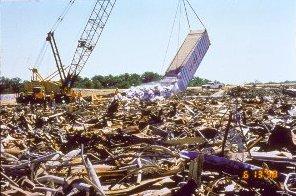
When most people think of alternative energy sources, they probably picture gleaming solar panels or wind turbines with long, white blades spinning above rich green cornfields. They probably don’t think of landfills or waste combustion facilities. Although municipal solid waste (MSW) may not be very picturesque, 14 percent of renewable electricity generation (not including hydroelectric dams) comes from operations that recapture energy from discarded waste.
In 2007, Americans recycled or composted about a third of the 250 million tons of the municipal solid waste generated in the country. The rest was either buried (54 percent) or burned (13 percent), and both of these “discard management” options offer the potential to recover energy.
For municipalities on the lookout to tap waste as an energy source, the choice between burying and burning waste is an important consideration. The key question is: is it better to burn or bury waste for clean electricity generation?
EPA researchers are helping them find the answer.
“For the first time, science-based information exists to evaluate what can sometimes be a controversial topic: the choice between burying and burning municipal solid waste when it comes to generating electricity," says EPA scientist Susan Thorneloe. She and her colleagues recently published the results of the first comprehensive set of life-cycle investigations comparing the practices of recapturing energy from burying or burning waste.
Generating Electricity from Waste
The EPA team compared two options for generating electricity from MSW. In the first, known to the researchers as waste to energy (WTE), trash is directly burned to power a steam-driven turbine. The second method, called landfill-gas-to-energy (LFGTE), involves capturing the gas (primarily methane) produced from buried waste as it decomposes. The gas is then combusted in an engine or a turbine to generate electricity. Both operations require adherence to emission regulations and pollution controls spelled out under the Clean Air Act in order to protect human health.
To compare the two options, the team used sophisticated models and a municipal solid waste decision support tool to present a comprehensive set of life-cycle emission factors per unit of electricity generated.In the end, what the scientists found was that burning waste is often the better option. Results of EPA’s research estimate that WTE (burning) is capable of producing up to about 10 times more electricity than LFGTE (burying) from the same amount of waste.
The findings for greenhouse gas emissions where particularly interesting: Even with optimum conditions for capturing methane generated from buried waste, the study showed that, per unit electricity generated, greenhouse gases emissions from landfills are two to six times higher than those generated from plants that burn waste.
But as with most environmental tradeoffs, the choice is not always the same in every location. The scientists found that individual communities would benefit from site-specific studies that incorporate community goals. EPA researchers will continue to help by working to improve tools that help communities make more informed decisions.
Learn More
- Parking Lots: Letting It Soak In
EPA researchers are experimenting with “green” parking lot designs and permeable pavement as a way to reduce runoff and improve water quality.
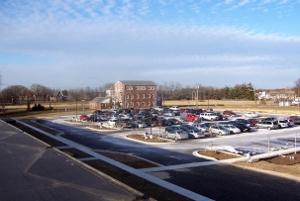
This past winter brought a thick blanket of snow to much of the country. Big piles lined our driveways. Gigantic, dirty-white mounds claimed parking spaces from lots in New England to the Mid- Atlantic. But things are starting to warm up.
The big melt is here.
When the snow that once covered a parking lot or other paved surface melts, the resulting water flows toward the nearest storm drain, entering the local watershed. And as snowmelt and other runoff flows over paved surfaces, it accumulates contaminants such as leaked motor oil, road salt, and hydrocarbons deposited from motor vehicle exhaust.
A team of EPA researchers are exploring how parking lots designed with permeable pavements and rain gardens can help.
To get started, EPA replaced a 43,000-square-foot section of parking lot at the Agency’s research lab and offices in Edison, New Jersey with three different types of permeable pavement, and planted several rain gardens with different types of vegetation.
Over the next decade, EPA researchers will evaluate the effectiveness of each pavement type and the rain gardens in removing pollutants from stormwater. They will also measure how each type of permeable pavement helps water filter back into the ground.
Throughout the project, scientists will compare changes in surface performance with standard parking lot maintenance, and track temperatures under each surface to detect patterns. Monitors will measure the water quality for at least ten years, to establish changes associated with time and seasonal patterns.
The research will be conducted without taking up parking spaces, as the lot will be functional during the study. This way, researchers can accurately evaluate how the different types of pavement handle traffic and vehicle-related pollution.
This is the first real-world experiment to determine if permeable pavement reduces pollutant runoff. The measurements and analysis EPA scientists make will answer some key questions about how effective permeable pavements are at reducing both the volume of stormwater and the amount of environmental pollutants flowing off parking lots and into nearby streams and rivers. This information will be a big help to municipalities and land managers across the country.
The project is part of EPA's Aging Water Infrastructure Research Program, which address the nation's critical water infrastructure needs through research and innovation.
Learn More
- Environment and Obesity: Looking for Links
EPA scientists are investigating the link between chemical exposure in the womb and the development of metabolic ailments such as obesity, high blood pressure, and diabetes down the road.

“Now we work.” That was First Lady Michelle Obama’s reaction to her famous husband’s declaration that he had just signed an executive memorandum establishing a task force on childhood obesity.
The new task force will tackle a growing health epidemic. Nearly one third of children in America are overweight. Far too many of these kids face a future sure to include what scientists and health officials refer to as “metabolic syndrome:” obesity, high blood pressure, insulin resistance or diabetes, and high LDL cholesterol – all risk factors for later heart disease. Such obesity-related problems swallow some $150 billion in yearly healthcare spending.
President Obama’s goal is to solve the problem of childhood obesity within one generation.
To meet that goal, the task force is first attacking what is widely known to be the major causes of obesity, the double whammy of high-calorie, high-fat diets coupled with the sedentary lifestyles of many of today’s kids.
While that will go a long way, a growing body of scientific evidence now suggests that there may be an additional culprit: early exposure to environmental chemicals. EPA researchers are working to better understand how fetal exposure to certain compounds can trigger the development of metabolic diseases down the road.
“It’s kind of a new biology, we are looking at how the prenatal environment might change the expression of our genes, and how that might affect health and disease risk for the rest of our lives,” says EPA toxicologist John M. Rogers, the Acting Director of Toxicity Assessment at the Agency’s National Health and Environmental Effects Research Laboratory.
It has been known for some time that poor maternal nutrition and low birthweight have strong correlations with future health problems such as obesity and coronary disease, explains Rogers. He and his EPA colleagues are looking at how prenatal exposure to certain chemicals can have similar long-term health effects.
So far, their experiments have yielded some important insights. “What we are finding is that offspring of rats that have been exposed to certain chemicals during pregnancy consistently show elevated blood pressure as adults,” says Rogers. Some rats also exhibit an elevated insulin response, another health condition under the metabolic syndrome umbrella.
Building on those findings is the next step. Rogers’ lab is continuing its work by looking for more ways to explore how early exposure to different chemicals might lead to changes in adult physiology.
What Rogers and his colleagues learn will provide important science for efforts, such as the First Lady’s initiative, to end childhood obesity by the time today’s kids are ready to become parents themselves.
Learn More
- Homeland Security: Keeping an Eye on Our Drinking Water Supply
EPA researchers test commercial, readily-available water sensors for use in early warning systems for detecting biological and chemical contaminants in drinking water.
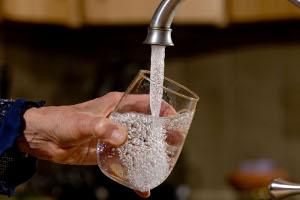
The vast majority of Americans need look no further than their kitchen faucet to find clean, abundant drinking water. The nation’s water distribution system is a model of success. Following the terror attacks of 2001, however, concern has grown over the risk of deliberate sabotage.
EPA researchers are working to lower that risk.
Scientists and engineers at EPA are working to verify and evaluate technologies to prevent, prepare for, and if necessary clean up biological, radiological, and chemical agents that could be used in a terrorist attack, including the deliberate contamination of public drinking water supplies and distribution systems.
Researchers in the program recently delivered some welcome news: sensors already widely used for real-time water quality monitoring offer the potential to also serve as early warning systems for detecting intentional contamination of drinking water systems.
Results of a series of tests EPA researchers conducted on the use of sensors to detect intentional contamination in drinking water distribution systems are highlighted in the recently-released Distribution System Water Quality Monitoring: Sensor Technology Evaluation Methodology and Results .
“Five years of EPA sensor detection data are summarized in the report.” says Jeff Szabo, one of the report co-authors. “It is a useful tool for anyone involved in contamination warning system design or online monitoring research.”
The report summarizes the testing of various online, real-time water quality sensors to evaluate their ability to provide warning of intentional contamination. Only sensors that are already commonly used by water utilities were tested. The research team identified free chlorine and total organic carbon (TOC) sensors as the most successful technologies for detecting select biological and chemical contaminants.
The report provides a “lessons learned” section, a summary of estimated operation and maintenance costs, and recommends best practices for online sensor contaminant warning systems, including instrument set up and acquisition; testing procedures and safety precautions; data analysis; and operation, maintenance, and calibration of online instrumentation.
The research has led to contaminant warning system pilots conducted by water utilities in major cities throughout the country, helping ensure we continue to look no farther than the kitchen tap for our drinking water.
EPA research on water quality sensors supports the Agency’s Water Security Initiative, a program established in response to a Homeland Security Presidential Directive calling for the Agency to develop robust, comprehensive, and fully coordinated surveillance and monitoring systems.
Learn More
